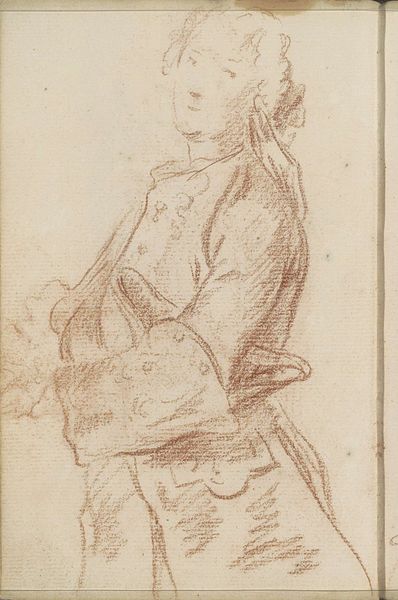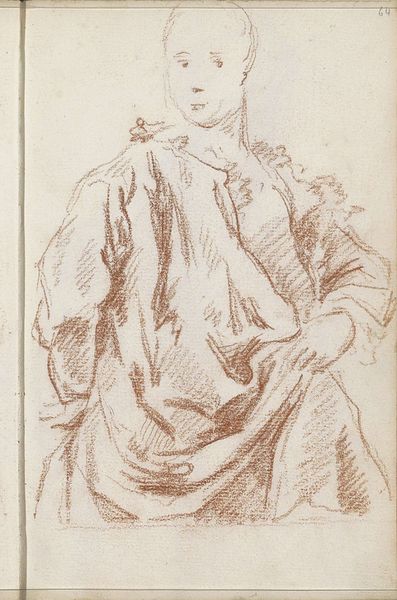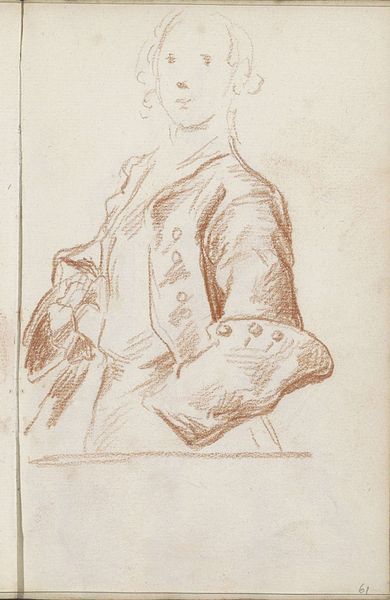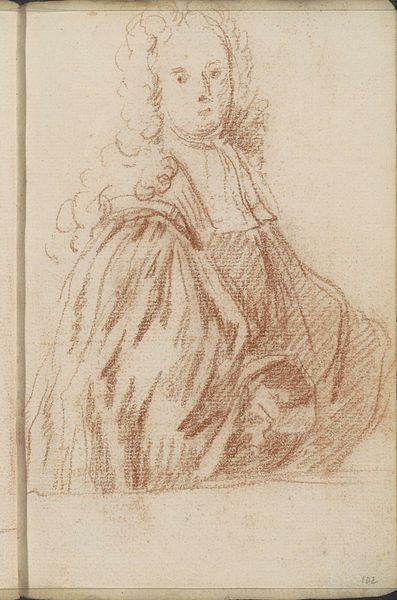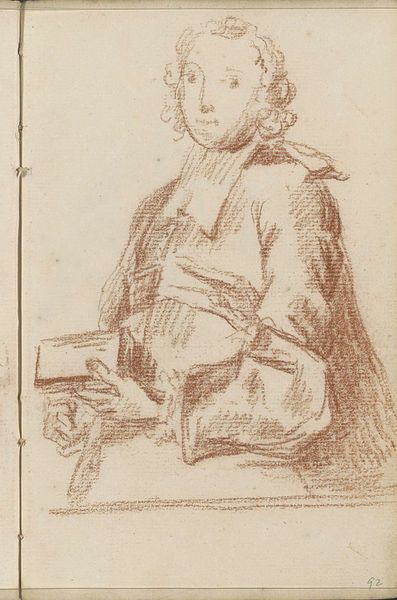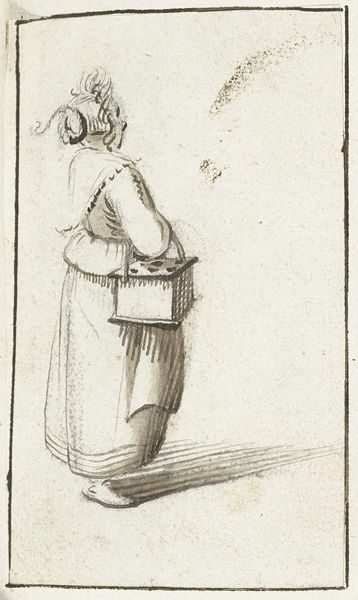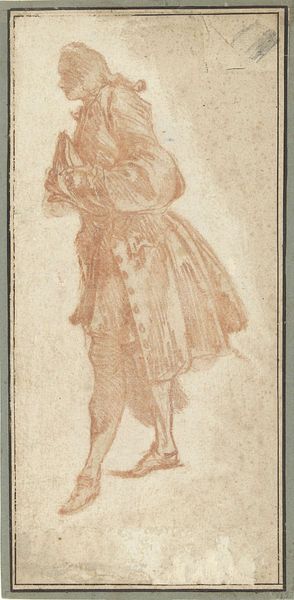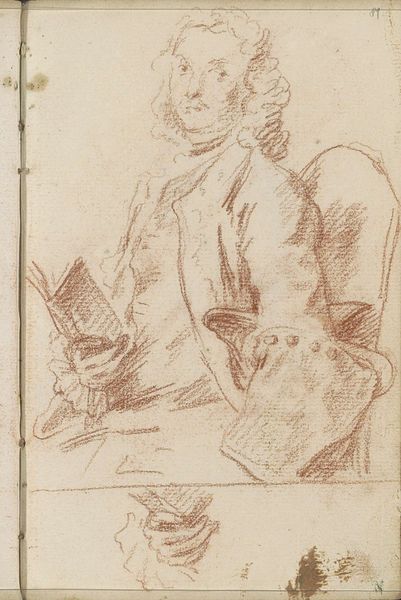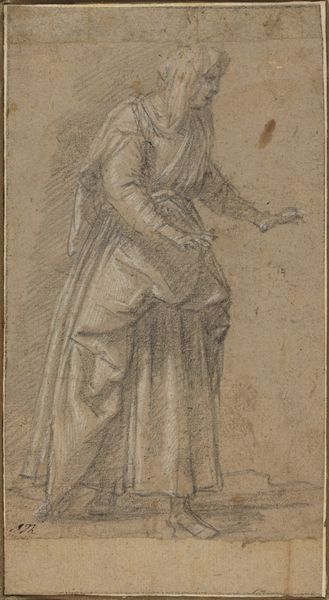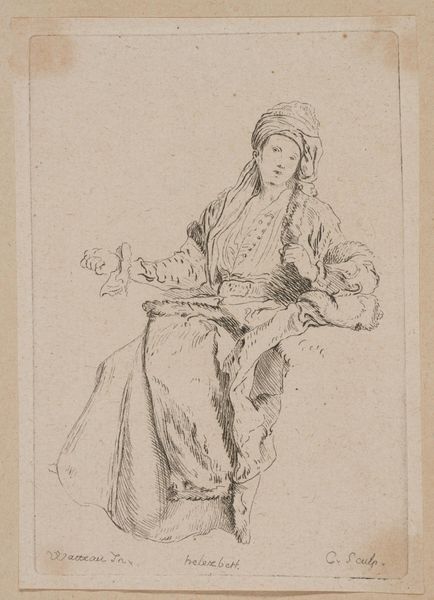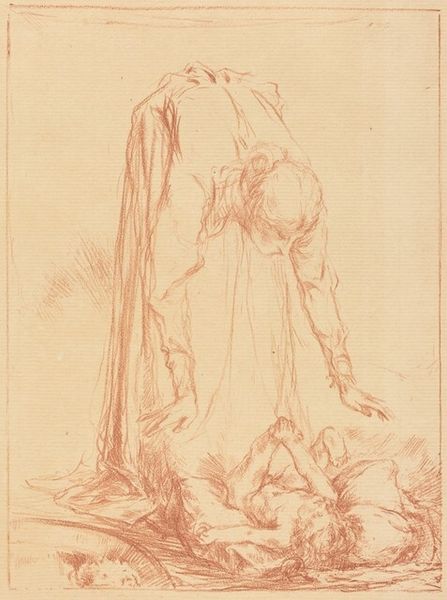
drawing, dry-media, pencil
#
portrait
#
drawing
#
baroque
#
figuration
#
dry-media
#
pencil
Copyright: Rijks Museum: Open Domain
Editor: This is "Standing Man with Raised Hand," a pencil drawing by Petrus Johannes van Reysschoot, made sometime between 1710 and 1772. The man seems to be caught in a moment of contemplation. What elements of its composition strike you? Curator: The emphasis falls on the figure's contrapposto. Notice how the lines defining the body exhibit a studied elegance. Van Reysschoot's choice of a sanguine pencil also informs the reading; the warmth lends a sense of immediacy, inviting scrutiny of the subject’s form. Observe the unfinished hand gesture—what meaning can we derive from its ambiguous nature? Editor: I hadn’t considered the contrapposto so consciously. I was distracted by the almost frenetic use of the pencil and wondered about its symbolic meaning? Curator: Meaning arises from the work itself. The seeming incompleteness of the underdrawing reveals the artistic process. See how the parallel strokes delineate form and create shadow? Editor: Yes, now I see the intention in those strokes. Is the quick rendering of the clothing indicative of a particular aesthetic sensibility in Baroque portraiture? Curator: Precisely. The Baroque valued dynamism and expressiveness. Van Reysschoot emphasizes surface detail to express the individual, evident in the detailed cuffs, buttons, and wig. This lends a liveliness absent from the more idealized forms of the Renaissance. Editor: That's fascinating; thank you. Focusing on its structure, I am beginning to see the interplay of lines, color, and form in a completely new way! Curator: Indeed. Focusing on the visual cues, we come closer to understanding the artist’s choices and the object's function as a composition.
Comments
No comments
Be the first to comment and join the conversation on the ultimate creative platform.

